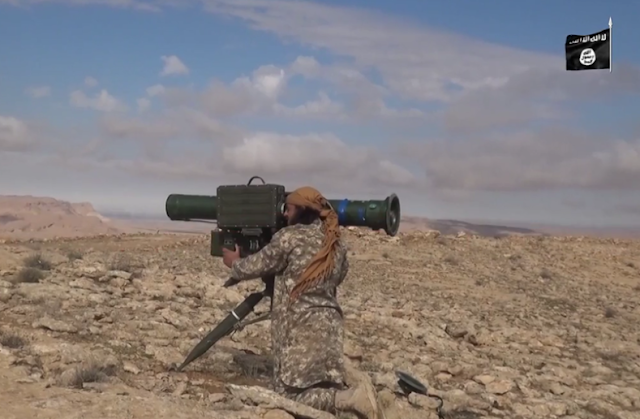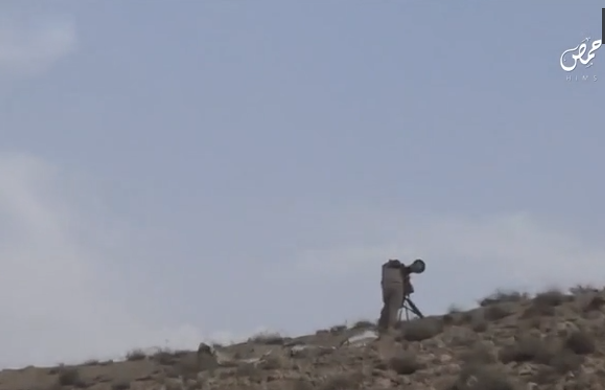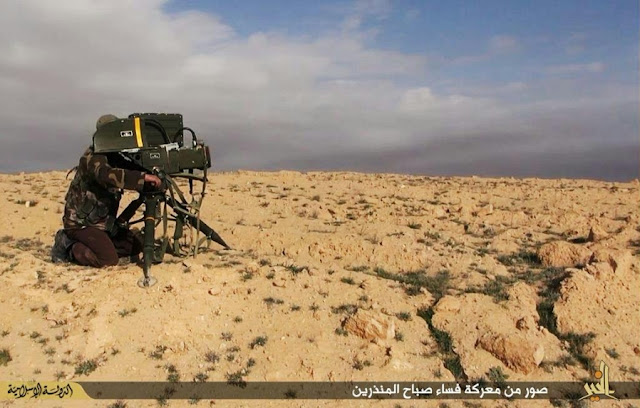HJ-8s were supplied to Syrian rebels in 2013 by Arab states, and likely the CIA. Sudan is the likely source of HJ-8s in Syria, paid for and delivered by Qatar. It is important to note that the Syrian army and its allies do not have the HJ-8 in their arsenal.
HJ-8s received by rebels in 2013:
Rebels began making heavy use of the HJ-8 shortly after their delivery. Starting in 2014, the Islamic State (ISIS) began using them as well. It is unclear exactly how ISIS acquired them. ISIS either captured large quantities of them, or rebels simply gave some of them away or sold them.
ISIS has used the HJ-8 extensively in the Homs Governorate, but also in the Damascus and Deir Ezzor Governorates. It was heavily used by ISIS in East Homs around Plamyra and Qaryatayn before the Syrian army managed to recapture them. So many missiles were used around East Homs in early 2016 that it seems they may have received/captured more of them just prior to the SAA offensive.
ISIS HJ-8 use in East Homs in 2016:
Notice the protrusion on the front of this missile, designed to defeat Explosive reactive armor:
East Homs, late 2015:
The HJ-8 has also seen use near Damascus:
Notice this HJ-8 variant has no protrusion on the front of the missile, and is therefore not designed to defeat Explosive reactive armor:
The HJ-8 also saw limited use around Deir Ezzor in mid-2015:
ISIS has captured or otherwise acquired a disturbing amount of HJ-8s from "moderate" forces in Syria. The HJ-8 has become one of the Islamic State's most used ATGMs. This is another example of why supplying weapons to insurgents to overthrow Governments is a bad idea. If these images did not give you an idea of the scale of ISIS HJ-8 use, here are spent missile tubes captured by the Syrian army in a single location North of Palmyra...






















No comments:
Post a Comment